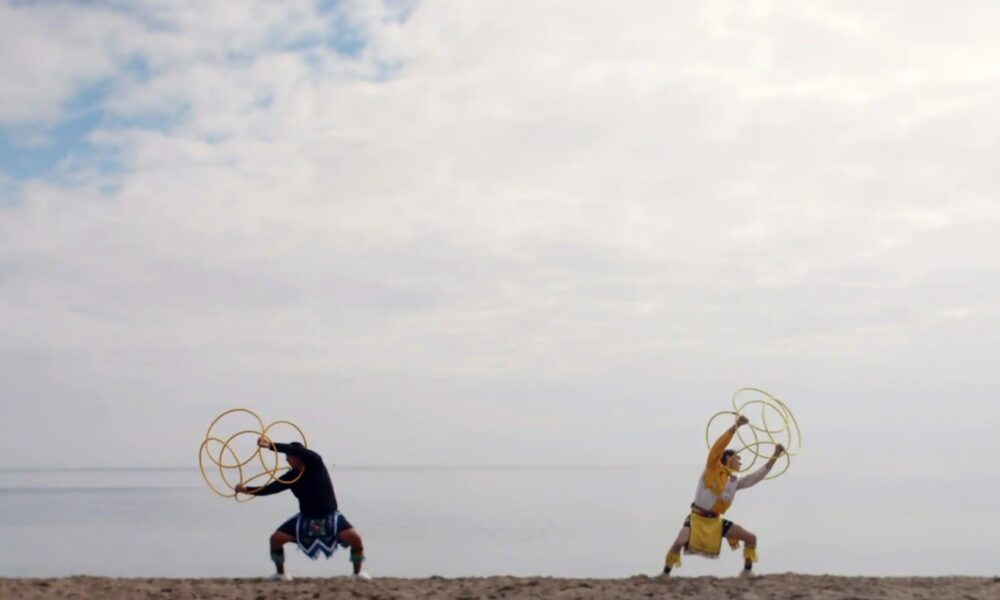From McGillian to award-winning documentarian, Nathalie Bibeau’s career is the answer to a question many Arts students dread: “What are you going to do with an Arts degree?”
Bibeau graduated from McGill in 1998 with a Joint Honours degree in history and sociology, before completing her Master’s degree the following year in history at the University of Toronto. After an internship with the United Nations Educational, Scientific, and Cultural Organization, she worked odd jobs, travelled, and met artists from around the world. Through those experiences, Bibeau realized that she could make a living as an artist, a career she once thrived in as a trained dancer and returned to as a documentarian. Her latest directorial project, Why We Dance, was produced for The Nature of Things—a documentary series examining the ways humans interact with nature. Why We Dance premiered on Feb. 25 on the CBC and will be available to stream on CBC Gem for the rest of the year. The documentary explores the intersections between science and art through dance—an activity we all do, whether we realize it or not. In an interview with The McGill Tribune, Bibeau described how her research on dance stretched her understanding of the art form.
“It opened the floodgates of what is possible in terms of dance, and what I imagined dance to be,” Bibeau said. “I always felt like I was a born dancer. When I started researching, I realized it’s not an activity we choose to do—we actually are all dancers.”
Bibeau’s team interviewed a compelling cast of choreographers, psychologists, and neuroscientists to understand the science behind dance. The diverse roster includes Bronwyn Tarr, an evolutionary psychologist at Oxford, who describes how even before birth, fetuses follow certain movement patterns. Such trends continue into childhood as creatures explore imitation, synchronization, and play as a means of expression. Why We Dance reveals that these tendencies toward dancing are neither exclusively human nor random. They explain developmental variations in social and physical behaviour, mating habits in animal species, and stories of cultural tradition. Fitting each element into a 44-minute run-time may seem absurd, but Bibeau crafts a fully realized picture.
From flamingo sanctuaries in France to MIT’s Immersion Lab to oceanside choreography, the cinematography in Why We Dance is stunning. Bibeau captures impactful frames by marrying the natural world with the man-made, further pushing the narrative forward. A meticulous storyteller, Bibeau also articulated the importance of the post-production process.
“One of the editing styles I was trying to work in for this film is ‘match cut,’” Bibeau said.“I wanted the film to feel like one long conversation. You can do that through narration and the clips you choose, but visually, I wanted to feel that way too [….] You’ll notice if we leave one scene with a turning dancer, we come into the next with someone finishing the turn. It was extremely deliberate.”
Beyond its captivating cinematics, Why We Dance touches on how dancing has served as a survival tool for oppressed communities throughout history. For instance, Bibeau interviewed Sandra Laronde, who is from the Temagami First Nation and serves as the executive and artistic director of Red Sky Performance, a world-renowned company of contemporary Indigenous performance. Through her work, Laronde explores the importance of dance in Indigenous cultures, noting that it was outlawed in Canada from 1884 to 1951.
“We’re supposed to dance for people who cannot,” Laronde explained in the documentary.
Dance is an empowering act, one that strengthens communities, connects us to the spiritual and natural world, and unites different generations to one another. When asked what viewers should take away from the film, Bibeau responded without skipping a beat: “I hope they dance.”









